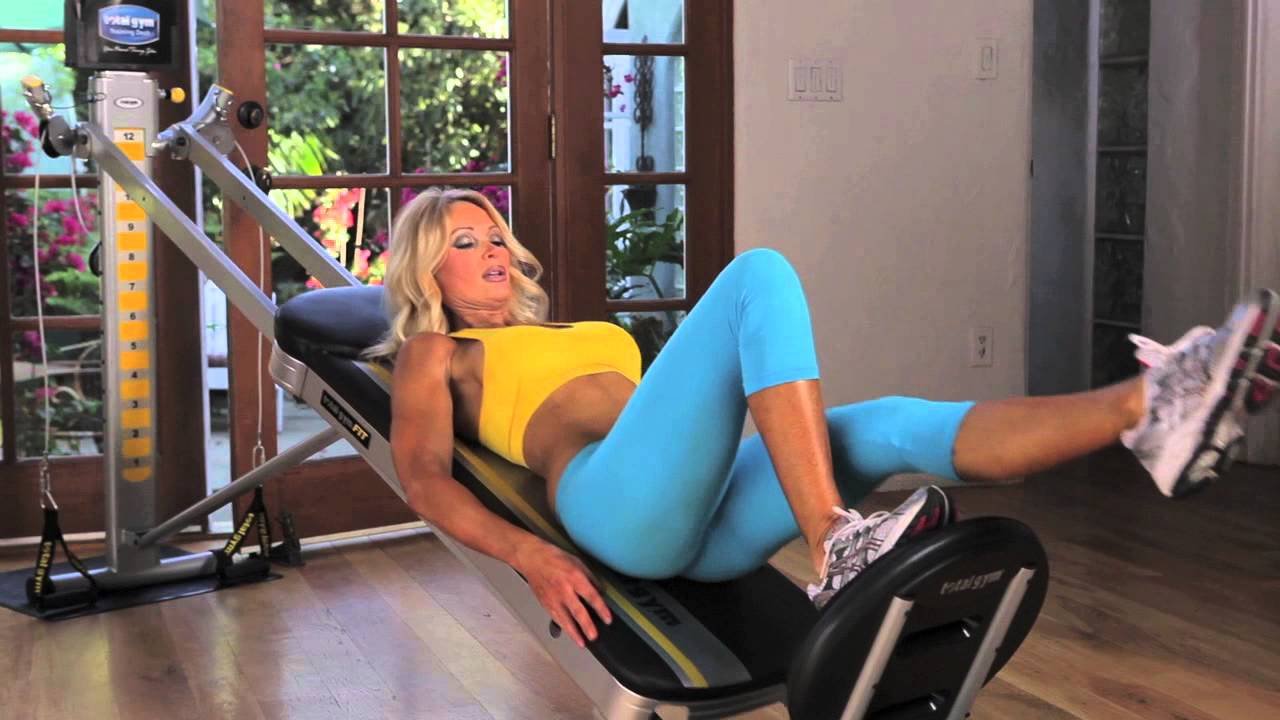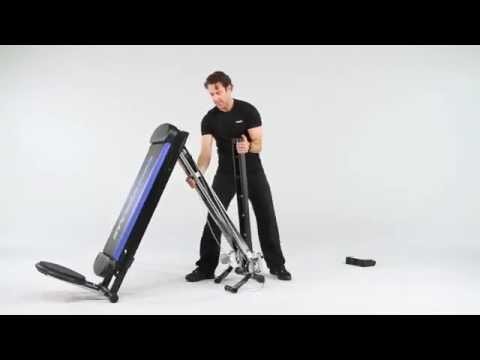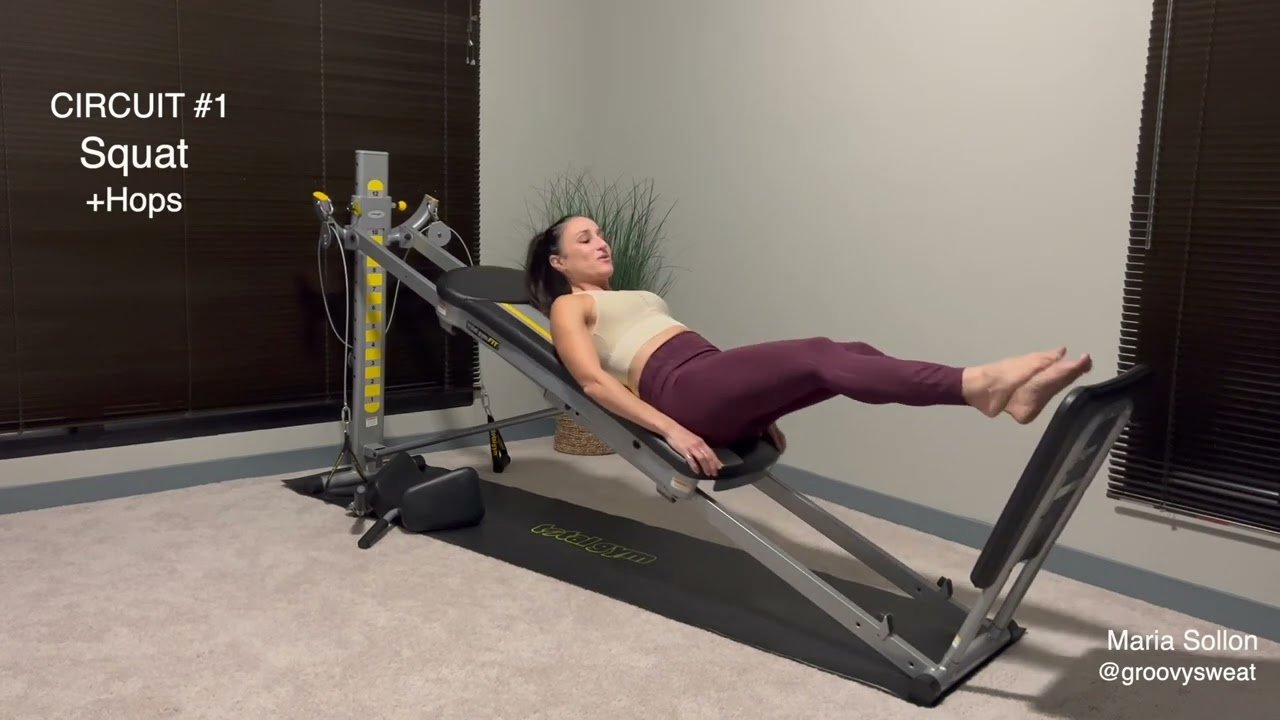In this comprehensive guide, “Setting Up A Total Gym For Leg Workouts At Home,” I harness my extensive experience and knowledge to meticulously explain the nuances of configuring a home gym suitable for exhaustive leg workouts. Through a confluence of insightful screenings and tangible demonstrations, I illuminate the myriad avenues one can take when embarking on the adventurous journey of setting up a personal fitness oasis. The paramount significance of this discourse is to methodically and definitively address the holistic query: How To Set Up A Gym At Your House? With a special focus on leg exercises, this treatise anchors its foundations in offering inventive and versatile solutions for the willing fitness enthusiast.

Understanding the Essentials of a Leg Workout
The importance of a leg workout
Throughout my academic research and extensive practice, I have discovered that leg workouts are an integral part of any comprehensive fitness routine. The expectation is not to attain the leg strength of professional athletes overnight but to give this crucial muscle group the attention it requires. Working out our legs progressively enhances our overall strength, stability, and endurance. It also increases our metabolic rate since the muscles in our legs are among the largest in our body. As a result, boosting their development aids in fat loss and muscle gain. Therefore, engaging in routine leg workouts is a step in the right direction towards a more healthy, fit, and balanced body.
Various exercises for leg workouts
There are diverse leg exercises that you can incorporate into your regime, from simple and less strenuous to complex and highly intensive. Some of these include squats, lunges, calf raises, deadlifts, among others. Each targets different muscles within the leg; for example, squats mainly target the quadriceps and glutes, while calf raises focus on the calf muscles. A combination of these exercises in a well-balanced routine can help you to achieve an all-round leg development.
The role of equipment in a leg workout
Gym equipment plays a crucial role in leg workouts, by adding an extra challenge to our exercises. It enhances our leg muscle growth, strength, and endurance. Contrary to popular belief, you don’t need a series of complicated machines to complete an effective leg workout. Basic gym equipment such as adjustable dumbbells, resistance bands, and leg press machines can suffice. To maximize the benefits of the equipment, you need to understand how to use each to your advantage.
Choosing the Right Space for Your Gym
Evaluating space in your home
When setting up a gym at home, the first step is to evaluate the available space. Look for a conducive area that offers enough room for you to move around freely and perform a range of exercises without hindrance. You may also want to consider the type of workout you’ll be conducting; in our case, leg workouts do not require vast space but enough to do exercises like lunges or squats comfortably.
Determining the size of the gym
The size of your home-based gym will largely depend on the available space and the type of equipment you need for your workouts. A good rule of thumb is to have enough room for your movements during workouts. For instance, if squats and lunges form a huge part of your leg training routine, then your gym should be big enough to allow you to execute these exercises comfortably.
Considering factors such as lighting, ventilation and noise levels
Other factors to bear in mind when identifying the perfect spot for your gym include lighting, ventilation, and noise levels. The room should be well-lit to avoid any accidents or strain during workouts. Equally important is ventilation; the area should be adequately aerated to provide a fresh air supply as well as help in temperature regulation during your training sessions. Noise levels are crucial too, especially if you plan to incorporate sound into your workouts or if you reside in a multiple occupancy dwelling.

Laying the Foundation: Flooring Options
Importance of gym flooring in ensuring safety
A crucial yet often overlooked aspect when setting up a home gym is the flooring. The choice of floor goes beyond aesthetics and into factors such as safety, comfort, and equipment maintenance. The right flooring protects you during your workouts by reducing the impact on your joints, reducing the risk of injuries, and providing a stable surface for exercises. Moreover, it protects your floor from getting damaged by gym equipment and reduces the noise produced during workouts.
Types of flooring options
There are several gym-friendly flooring options available for home use. These include rubber flooring, foam tiles, carpet tiles, vinyl tiles, among others. Each of these options has its unique perks and downfalls. For instance, rubber flooring is durable and great for heavy workout equipment, while foam tiles are a cheaper alternative that offers good impact absorption.
How to install gym flooring at home
When it comes to installing your gym flooring, the process will largely depend on the type of flooring you choose. For some types like interlocking foam or rubber tiles, the process is quite straightforward since they come in pieces that you can easily put together. Alternatively, for other types like vinyl, you might need professional installation.
Investing in the Right Equipment for Leg Exercises
Exploring different types of gym equipment
The current fitness market is flooded with numerous types of gym equipment that can be overwhelming to a beginner. A good starting point is to separate these tools into categories such as cardiovascular machines, strength training machines, free weights, and flexibility equipment. For our leg workouts focus, we’re more interested in strength training machines and free weights.
Highlighting essential equipment for leg exercises
The essential equipment for effective leg workouts include the squat rack, leg press machine, adjustable dumbbells, and resistance bands. These pieces of equipment are versatile and target the major muscles in your legs, namely the glutes, quadriceps, hamstrings, and calves.
Considerations when buying gym equipment
When buying gym equipment, consider factors such as the available space in your home, your fitness level, and your workout goals. Furthermore, always prioritize quality over cost. Reliable and sturdy equipment may come with a higher price tag, but they offer better service and often last longer.

Setting up a Squat Rack
The importance of a squat rack in leg workouts
The squat rack is a core piece of equipment in leg workouts. It enables us to perform different types of squats, which are paramount for developing the glutes and quadriceps, among other muscles. Not only does it allow for varied training, but it also provides safety when performing heavy lifts as the side rails can catch a barbell if you cannot complete a lift.
How to assemble a squat rack
Assembling a squat rack at home is a rather straightforward procedure but can vary depending on the manufacturer’s instructions. Normally, you will start by constructing the frames before connecting them using the provided pins or bolts. After that, you set up the safety bars and J-hooks at your preferred height.
Safety considerations when using a squat rack
Safety should never be compromised during workouts. When using a squat rack, ensure that it is on a flat and stable surface. Always check the equipment before use to ensure that all parts are tight and secure. It is also advisable to learn proper lifting techniques and never attempt a weight that is beyond your capacity without a spotter.
Incorporating Leg Press Machines
Benefits of leg press machines
One of the essential tools for leg workouts is a leg press machine. This equipment primarily targets the quadriceps but also works the glutes and hamstrings. It allows for the lifting of heavy weights in a controlled and risk-free environment, which is great for muscle building and strength. It is also easier to use compared to free weights, making it suitable for beginners.
Options for leg press machines for home gym
There is a variety of leg press machines suitable for a home gym. These range from vertical and inclined leg presses to seated leg presses. The choice largely depends on factors such as your workout goals, space availability, and budget.
Guide to using a leg press machine
To correctly use a leg press machine, start by adjusting the seat and back support to ensure they fit your body size. Next, select an appropriate weight that is challenging but not too heavy to compromise your form. Position your feet on the platform, push the weight up until your legs are fully extended but without locking your knees, then lower it down slowly.

The Role of Adjustable Dumbbells
Understanding the function of dumbbells in leg workouts
Although often associated with upper body workouts, dumbbells are also incredibly useful for leg workouts. They can add resistance to exercises such as squats, lunges, and deadlifts, stimulating your muscles to grow stronger and larger.
Choosing the best adjustable dumbbells
When choosing dumbbells, they should be of high quality, easy to adjust, and have a wide range of weights. Adjustable dumbbells are a great choice for a home gym as they are space-efficient and offer flexibility in terms of weight.
How to use dumbbells effectively for leg exercises
To use dumbbells effectively, you should learn the correct form of each exercise, start with a suitable weight, and progressively increase it. While lifting, always ensure your movements are slow and controlled to maximize the muscle stimulation and minimize the risk of injuries.
Including Resistance Bands in Your Leg Workouts
Importance of resistance bands for leg workouts
Resistance bands are another piece of equipment that’s highly versatile and very beneficial for leg workouts. They come in various resistance levels, allowing for progression as you become stronger. They are also fantastic for lateral movements, engagement of smaller stabilizing muscles, and adding variety to the exercises.
Different types and levels of resistance bands
There are typically two types of resistance bands; loop bands and tube bands. Loop bands are great for exercises targeting lower-body muscle groups like the glutes, while tube bands come with handles and are often used for upper body exercises. Each type comes in several resistance levels, from light to heavy, offering room for progression.
How to use resistance bands in your exercises
To use resistance bands, you simply need to add them to your regular exercises. For example, for a resistance band squat, hold the band with both hands, step on it with both feet apart, then perform a squat. It’s highly necessary to ensure that the band is secured under your feet to avoid snapbacks.

Maintaining Your Home Gym
Routine check and replacement of equipment
To ensure your home gym equipment continues serving you effectively and safely, regular inspection and timely replacement are crucial. Check for any signs of damage or wear and tear like cracks, unstable parts, or worn out resistance bands. Any faulty equipment should be repaired or replaced promptly to avoid accidents or substandard workouts.
Keeping your gym space clean
An orderly and clean workout space is not only inviting but also hygienic. Areas you’ve sweated on should be wiped down, dust should be regularly removed from your equipment, and the gym floor should be cleaned to avoid accidents caused by slipping on sweat or dirt.
Creating a workout schedule
Having a workout schedule not only helps in your overall motivation but also in the proper utilization and maintenance of your equipment. It aids in effective rotation of the equipment, ensuring that each tool is used as desired and that every muscle group is taken care of.
Motivation and Discipline in Working Out at Home
Creating a workout routine
Since human beings are creatures of habit, having a workout routine is essential for regular workouts. You should aim to establish a routine that fits into your daily schedule. For instance, if you’re most energetic in the morning, then schedule your workouts for that time and stick to it.
Staying motivated during home workouts
To stay motivated, you need to set achievable goals and track your progress regularly. You could also add variety to your workouts to avoid monotony. Listening to your favorite tunes or watching workout videos can also boost your motivation. Remember, the key is consistency; the results might not show immediately but with determination, that goal will be attained.
Discipline and consistency in home workouts
The most challenging part of home-based workouts can be the lack of supervision and the proximity to distractions. However, with a good amount of discipline, these challenges can be conquered. Remember, you are your own trainer and the level of your fitness largely depends on your commitment to your workouts.
In conclusion, setting up a total gym for leg workouts at home is a meticulous process that calls for understanding the essence of a leg workout, choosing the right space, laying the right foundation, investing in the right equipment, and maintaining motivation and discipline. With these accomplished, you are ready to embark on a journey to stronger and healthier legs.


